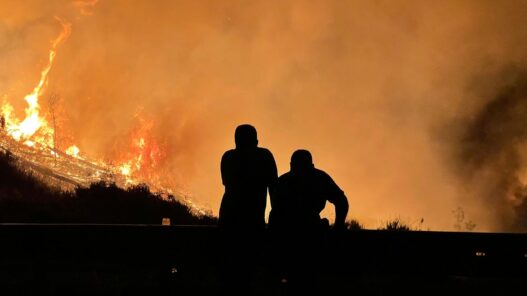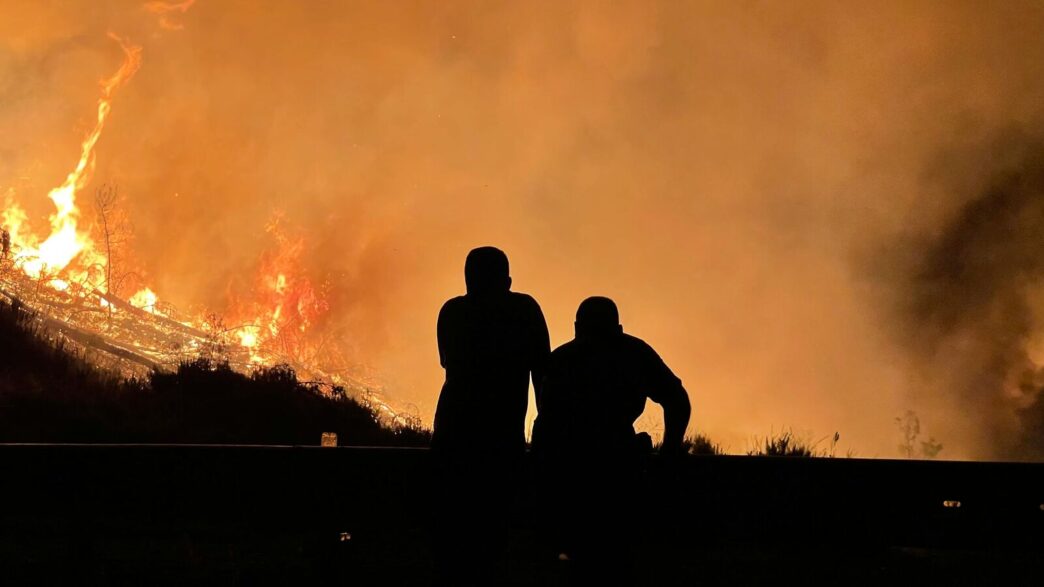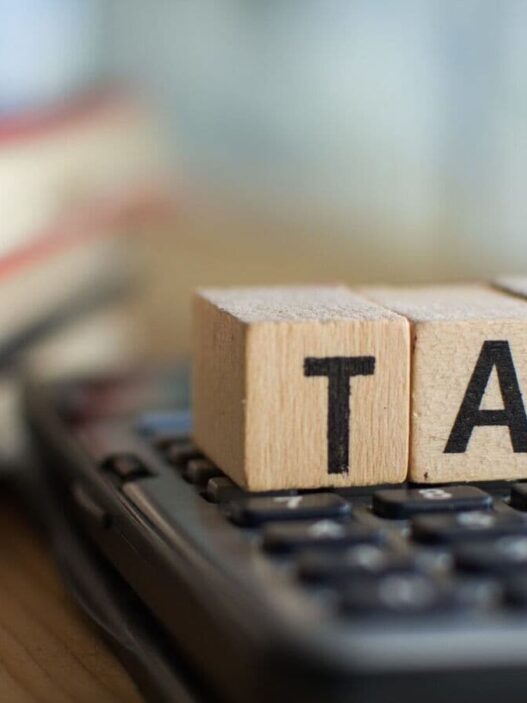The recent California wildfires have reignited global concerns about climate change and its role in intensifying natural disasters. Beyond the immediate devastation, they have also highlighted a growing crisis in the insurance industry. It is the rise of insurance deserts—regions where access to insurance becomes scarce or nonexistent due to extreme risk and unsustainable losses.
As insurers pull out of high-risk areas like California, individuals and businesses are left vulnerable, with little to no financial protection against future catastrophes.
This leaves homeowners without access to affordable or any insurance coverage, forcing the government to intervene with temporary measures. This situation has left me wondering if India, a country prone to frequent and rising natural disasters like floods, cyclones, and landslides, can emerge as a potential insurance desert.
Also read: Cyclones, heatwaves push up insurance cost for India’s wind power projects
Unlike developed economies, where insurance penetration is high, in a country like India, low insurance penetration clubbed with rising natural catastrophes and hardening reinsurance rates forms just the right recipe for creating an insurance desert.
Who pays the price?
This makes insurance expensive, leading to a low insurance uptake and creating a vicious cycle. But who suffers the most from this? Common citizens.
Let’s take a recent example, the estimated loss from Himachal Pradesh floods in 2023 was about ₹13,000 crore while insured loss stood at roughly ₹1,300 crore. The state received about ₹430 crore in disaster relief from the central government, while the state spent around ₹4,500 crore to deal with the disaster. Who is going to pay for this remaining amount? Who is at fault when a budding entrepreneur incurs loss due to such disaster and is pushed into poverty? Who will take responsibility for a homeowner whose house was destroyed? Imagine the plight of a senior citizen, whose house is washed away during such disasters, with limited or little income sources, how they will gather resources to re-build?
Also read: The US’ angst over health insurance: Lessons for India
If you pause and think, the main reason society was created is to support each other. People started living together to attain collective safety and security. Even the governments were formed with the intention to look after the people they governed. And what was the fundamental purpose of the insurance industry? The industry was established to address a societal need for financial protection against loss and uncertainty.
It still acts as a safety net, ensuring that individuals and businesses have a support system in the face of unforeseen disasters. In a country like India, where our focus is to build a Viksit Bharat or a developed nation, the insurance industry’s role becomes even more critical due to the country’s susceptibility to natural calamities, rapid urbanisation, and growing economic disparity. But how to achieve it, the question remains?
When a natural disaster strikes, the government often has to provide assistance to those impacted. But how does the government manage this? The answer is taxes. If you think about it, taxes act like insurance premium. The government collects funds from citizens in the form of taxes to provide financial relief during natural disasters, implement trust-based insurance schemes, and support social welfare programs.
However, these funds are often stretched thin, and inefficiencies in distribution leave gaps in coverage and response time. These inefficiencies exist because no one is working towards the improvement of the risk in the area.
Bridging the protection gap
This is where insurers can step in; governments can partner with insurers to manage these risks more effectively. Insurers bring expertise in risk assessment, claim management, fraud detection, and elimination. By entrusting them with the administration of such schemes, the government can ensure that funds are utilised efficiently, ensuring speed, fairness, and reduced fraud.
Let’s look at some examples, Flood Re, a joint initiative between insurers and UK government, offers affordable flood insurance, ensuring that homeowners in high-risk areas can protect their properties without facing financial hardship.
Also read: Your rights in life and health insurance claims: Unpacking the moratorium clause
Similarly in Australia, to counter increasing natural hazard risks, the government and insurers have come together to form hazards insurance partnership (HIP). HIP aims to offer comprehensive insurance coverage against various natural disasters at an affordable price, to ensure quick recovery for affected individuals.
India too has seen successful demonstrations of collaboration between the government and insurers in the form of schemes like Pradhan Mantri Fasal Bima Yojana (PMFBY) and Pradhan Mantri Jan Arogya Yojana (PMJAY). Since the launch of PMFBY in 2016, claims of over ₹1,55,977 crore have been paid to farmers. These payouts provide financial relief to farmers, easing their struggles and lowering the rate of farmer suicides, as per statistics, which is genuinely a positive societal change. By covering risks like droughts and floods, insurers ensure farmers can keep contributing to food production worry-free.
Also read: Mint Primer: A tech solution to crop insurance woes?
Similarly, PMJAY covers more than 36 crore individuals. How crucial a health insurance scheme like this is can be estimated from the fact that each year, approximately 7% of India’s population is pushed into poverty because of healthcare expenses.
In India, where natural catastrophes were one-off occurrences, they are now sadly becoming yearly affairs. What is more worrisome is that the protection gap (between insured loss and economic loss) stands at a staggering 90%. In times of disaster, governments often spend crores in disaster relief funds to help citizens.
The Central Government has allocated ₹13,693 crore for the National Disaster Mitigation Fund (NDMF) and ₹32,030.60 crore for the State Disaster Mitigation Fund (SDMF) from 2021-22 to 2025-26.
Promise of parametric insurance
Parametric insurance offers a timely solution for claims settlement following natural disasters. Basing pay-outs on predetermined triggers, such as earthquake intensity or rainfall levels, rather than assessing individual losses facilitates swift financial support, allowing affected individuals to recover and rebuild more effectively.
Since various parts of India are exposed to different kinds of natural disasters, the product can be tailored to protect against the main risks in each state, such as floods, cyclones, heavy rain, and floods. There is a pressing need to have various parametric insurance schemes nationwide, but insurers and governments should work hand in hand to build such an efficient mechanism. Such collaborative models help build trust and confidence among citizens.
We must encourage higher insurance uptake to prevent insurance deserts from becoming a reality in India. This calls for leveraging technology to extend the reach of insurers, especially in remote areas, strengthening public-private partnership models to ensure last-mile coverage, and educating citizens about the importance of insurance and its role in financial protection.
The idea is that rather than getting derailed after a natural disaster, India should be able to bounce back stronger and head confidently towards becoming one of the strongest economies in the world. With a united push towards ‘Insurance for All by 2047,’ the industry can ensure that no one is left behind, regardless of their geographical or financial circumstances, and that the insurance desert never comes into this country.
(Tapan Singhel is MD & CEO at Bajaj Allianz General Insurance)












